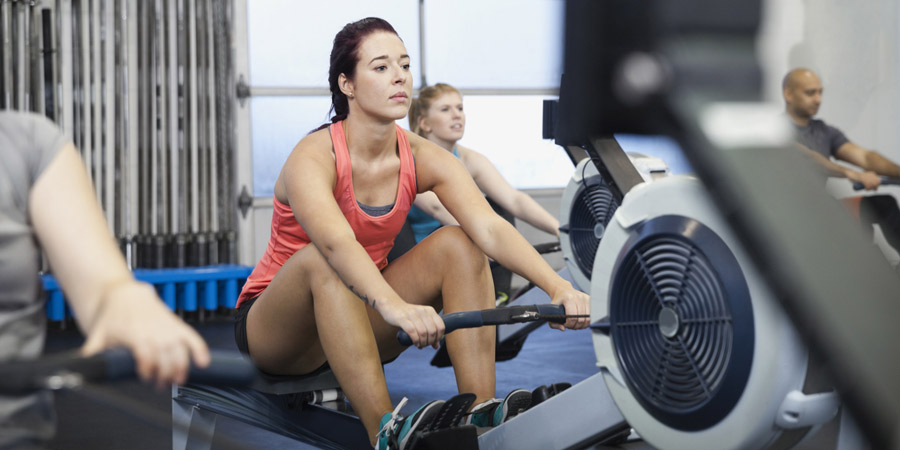Rowing

Rowing is another excellent cardiovascular exercise. Rowing machines have become popular in health clubs as a fun method of improving cardio-respiratory health, as well as improving arm, back, and leg muscular endurance. Other benefits include decreased body fat, decreased risk of heart disease, and a low risk of injury.
- Rowing machine work well for those with low to good functional capacity and who have orthopedic limitations that prohibits the repetitious pounding of body weight that accompanies a walking or jogging program. Rowing is relatively easy on the bones, joints, ligaments, and tendons.
- Beginners may need several sessions to learn how to perform efficient, repetitive rowing motions that synchronize the legs, arms, and back.
- Sit on the seat of the rowing machine and secure your feet to the anchors in the front part of the machine. With your upper body leaning slightly forward, move forward on the rower, drawing your knees up to your chest.
- Your head should be up and your arms extended straight in front of you.
- Push back with your legs, straighten your back to the upright position, and pull the handle to your abdomen. Keep your back straight and your abdominal tight.
- Bring yourself forward to the starting position by puling with your legs, leaning forward, and extending your arms in front of you. A good rate is approximately 15-30 rows for minute.
- Always warm-up, stretch, and cool-down during your rowing session. Begin each session by rowing at very low intensities for 5-10 minutes (warm-up) and then stretch your calves , quadriceps, hamstrings, hips, biceps, latisimus dorsi, and low back muscles (refer to the WF Flexibility Training component for the principles and techniques of stretching.) After your exercise session, cool-down by rowing again at very low intensities for 5-10 minutes and then stretch the same muscles as before.
- Be sure to breathe regularly throughout the exercise session.
- It is important to gradually increase the duration (the time you spend in session) before you increase the intensity. That is, when beginning a rowing program, be more concerned with increasing the number of minutes of the exercise session before you increase the intensity, by increasing your speed. Interval training (explained in the Cardiovascular Exercise contents) is an effective method of gradually increasing your intensity.
- You can vary the rowing intensity on most machines by changing the hydraulic or wind pressure or pressure cylinder, or by electronic programming. Or you can increase the rowing rate, the number of rows per minute.